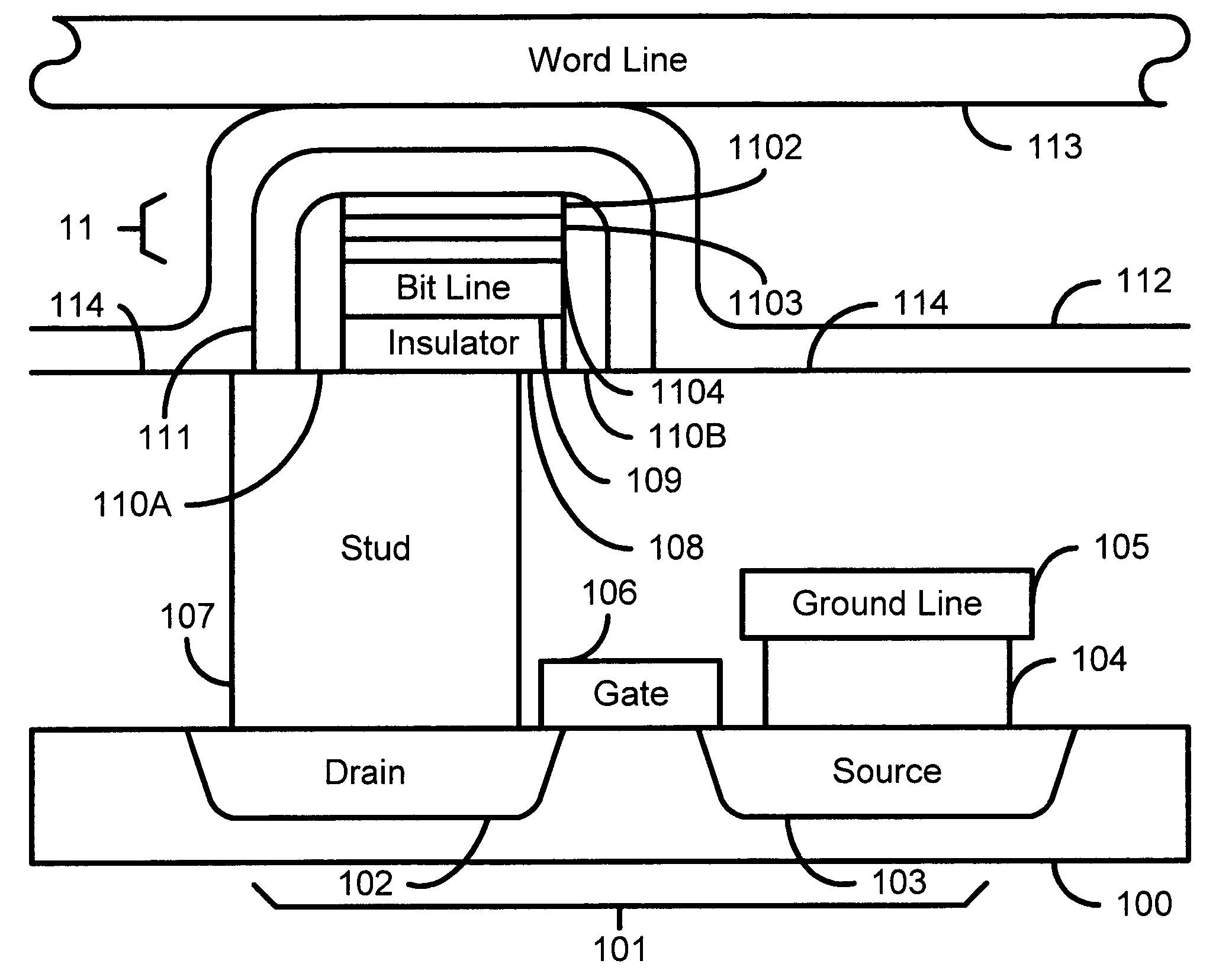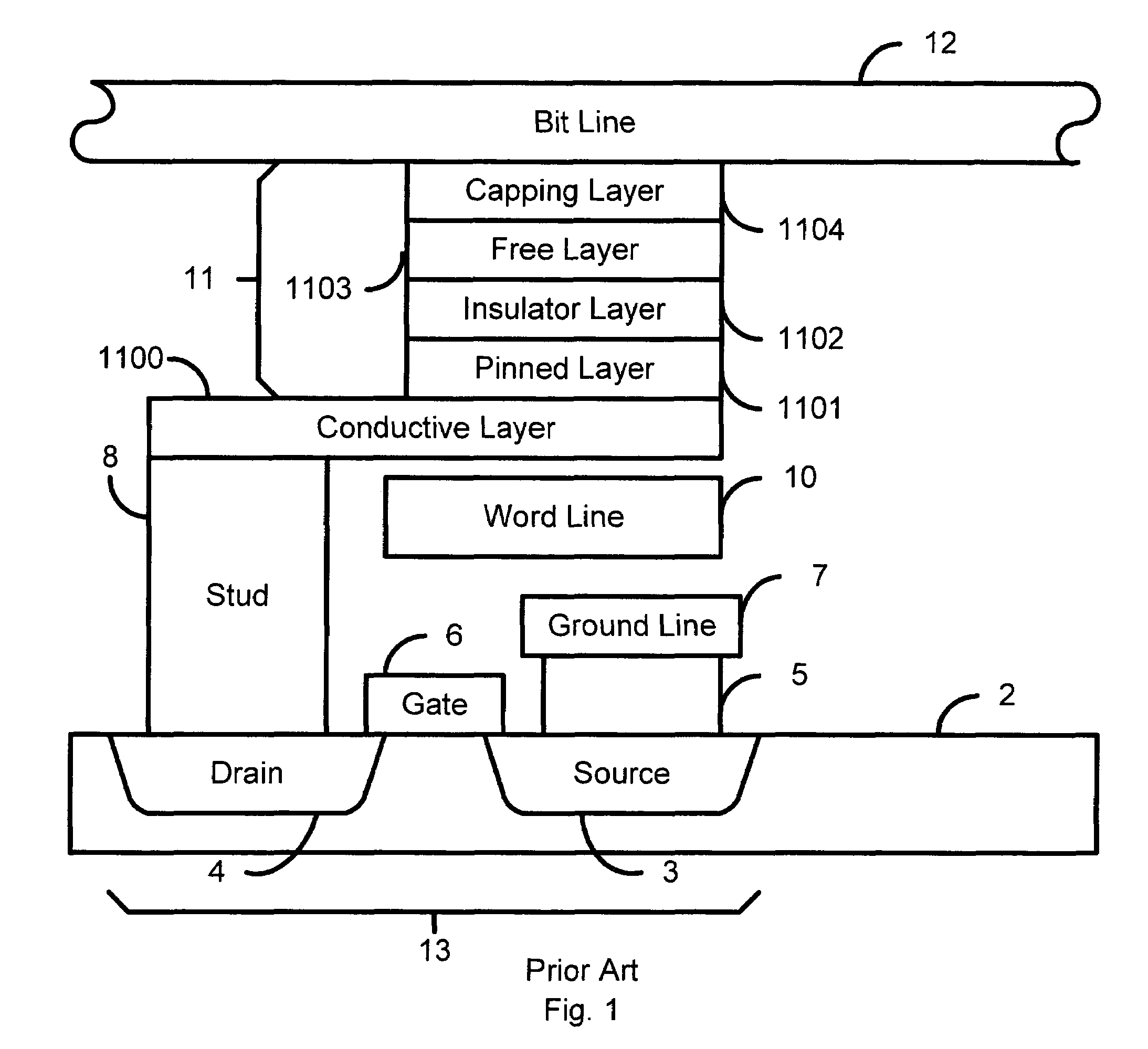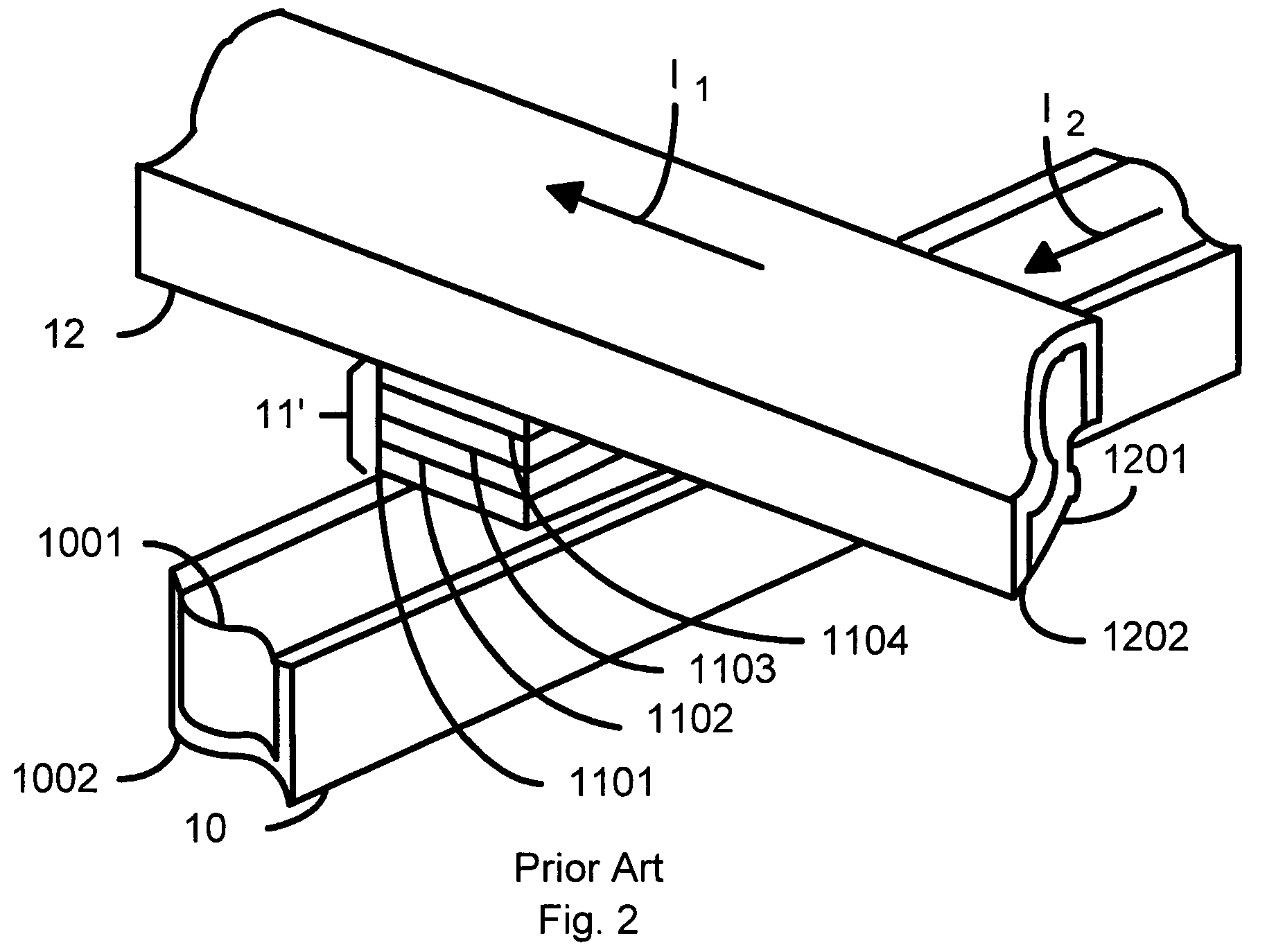MRAM architecture and a method and system for fabricating MRAM memories utilizing the architecture
- Summary
- Abstract
- Description
- Claims
- Application Information
AI Technical Summary
Benefits of technology
Problems solved by technology
Method used
Image
Examples
first embodiment
[0046]In the method 210 which fabricates an MRAM cell in accordance with the present invention shown in FIG. 4, no photolithography process was used in forming the sidewall spacers 110A and 110B. Instead, a CVD dielectric layer deposition is performed in step 222 followed by an anisotropic etching process in step 224 to expose the metallic surface on the top of the MTJ stack 11 and stud 107 for thin-film conductor 112 to make the contact.
second embodiment
[0047]FIG. 9 depicts an MRAM cell in accordance with the present invention. Many of the components of the MRAM cell are analogous to those depicted in FIGS. 4–8c. Consequently, these components are labeled similarly. For example, the bit line 109′ corresponds to the bit line 109 depicted in FIGS. 4–8c. Referring to FIG. 9, the metallic surfaces on the top of the MTJ stack 11 and stud 107′ are exposed by a photolithography process followed by an etching process. As a consequence, insulating layer 110′, which corresponds to the sidewall spacers 110A and 110B of FIG. 4, exists not only along the edges of the MTJ stack but also in other areas. However, because an aperture in the insulating layer 110′ was formed to expose the MTJ stack 11 and stud 107′ as described above, the insulating layer 110′ does not exist where the thin-film conductor 111′ comes in contact with the stud 107′ and the top of the MTJ device.
[0048]Referring back to FIG. 4, another feature shown in the first embodiment...
third embodiment
[0049]FIG. 10 depicts an MRAM cell in accordance with the present invention that can address this potential issue. Many of the components of the MRAM cell shown in FIG. 10 are analogous to those depicted in FIGS. 4–8c. Consequently, these components are labeled similarly. For example, the bit line 109″ corresponds to the bit line 109 depicted in FIGS. 4–8c. In the MRAM cell depicted in FIG. 10 the MTJ stack 11″ and the bit line 109″ reside completely on top of the stud 107″ and completely off of the surface of the dielectric 114″. The size of the stud 107 is adjusted to accommodate the dimension of the MTJ stack 11. Thus, in the embodiment depicted in FIG. 10, the stud 107″ includes two parts, a stud 107″ and a top portion 107A″.
PUM
 Login to View More
Login to View More Abstract
Description
Claims
Application Information
 Login to View More
Login to View More - R&D
- Intellectual Property
- Life Sciences
- Materials
- Tech Scout
- Unparalleled Data Quality
- Higher Quality Content
- 60% Fewer Hallucinations
Browse by: Latest US Patents, China's latest patents, Technical Efficacy Thesaurus, Application Domain, Technology Topic, Popular Technical Reports.
© 2025 PatSnap. All rights reserved.Legal|Privacy policy|Modern Slavery Act Transparency Statement|Sitemap|About US| Contact US: help@patsnap.com



